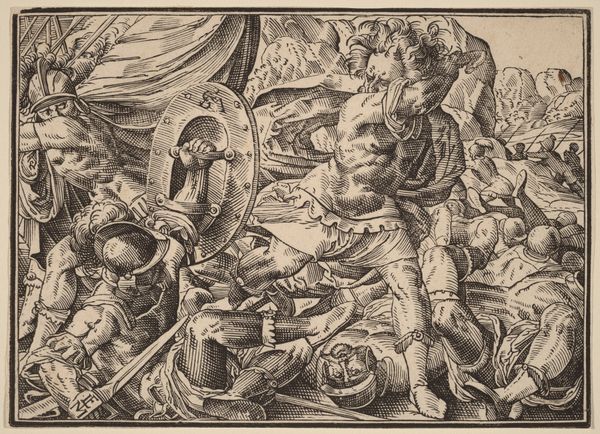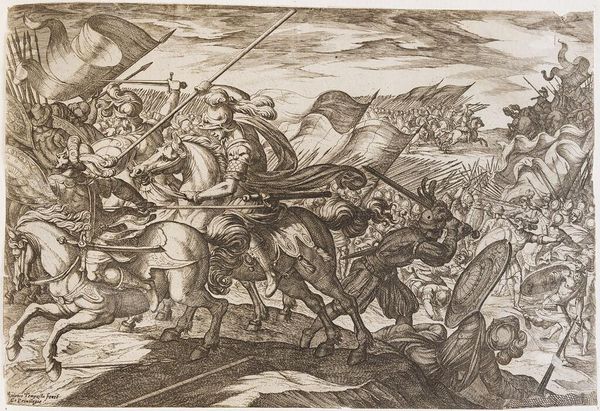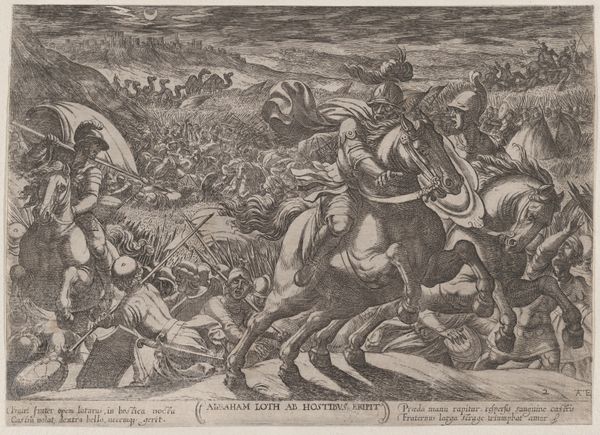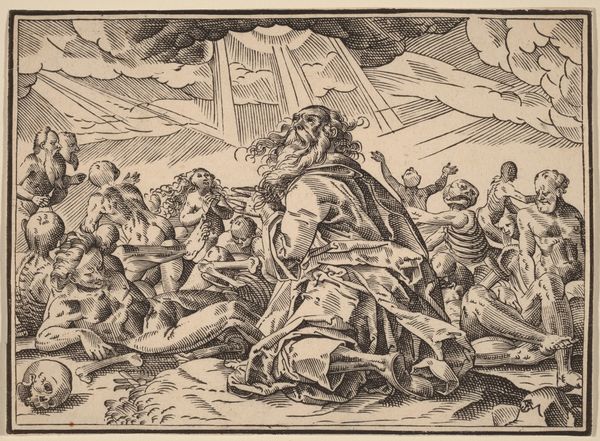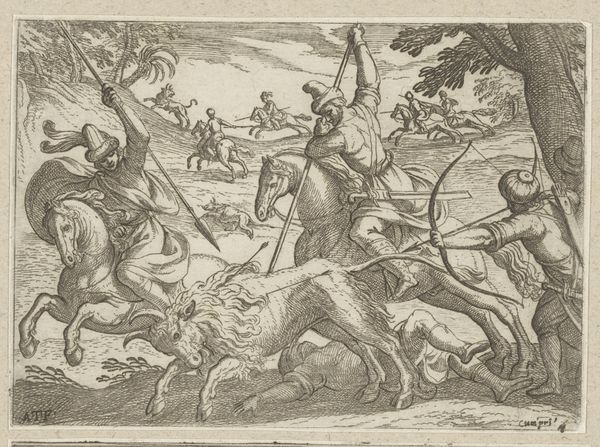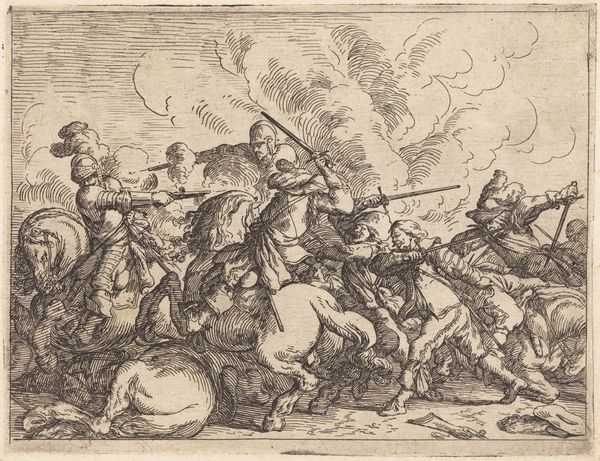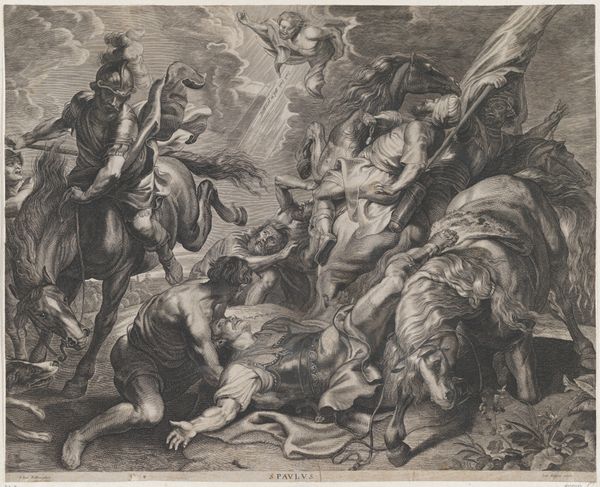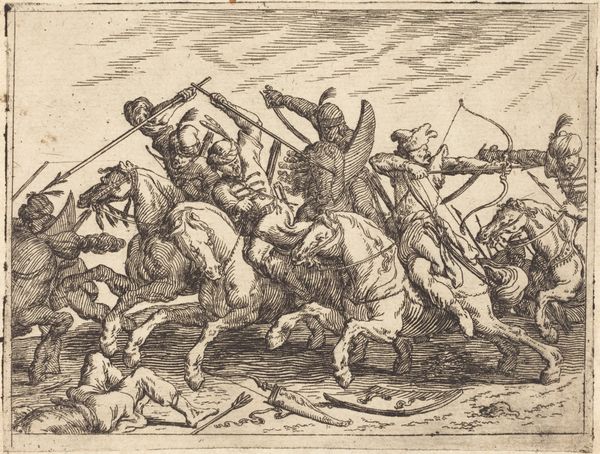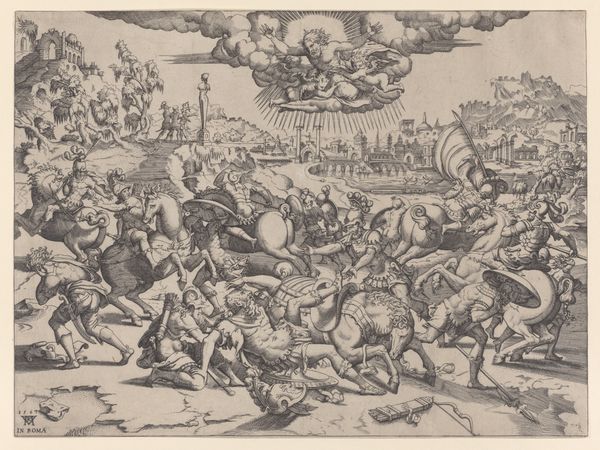
print, engraving
#
medieval
#
narrative-art
#
pen drawing
# print
#
figuration
#
line
#
history-painting
#
engraving
Dimensions: sheet: 10.5 x 14.7 cm (4 1/8 x 5 13/16 in.)
Copyright: National Gallery of Art: CC0 1.0
Editor: We’re looking at Christoph Murer's "The Four Horsemen of the Apocalypse," possibly from 1630. It's a print, an engraving really, and the chaotic scene is pretty intense. What strikes me is the way Murer depicts death riding alongside figures of conquest, war, and famine. What do you see in this piece, especially regarding its commentary on power? Curator: Well, given the period, it's impossible to divorce this image from the socio-political anxieties of 17th-century Europe. Think of the ever-present threats of plague, warfare, and social upheaval. The Four Horsemen weren't just religious symbols; they embodied real-world fears about mortality and the fragility of power structures. That figure of Death wielding a scythe...whose harvest is it truly serving? Editor: It’s like Death isn’t an end, but a facilitator? Helping to clear the field for new power structures? Curator: Precisely! And consider the composition. The Horsemen dominate the frame, trampling figures beneath them. Murer isn't just depicting destruction; he's showing us the cyclical nature of dominance and subjugation. How might we interpret these 'Horsemen' figures today, given contemporary issues like climate change or systemic injustice? Editor: That’s interesting. If this image spoke to anxieties about mortality and power back then, today, those figures could be seen as systems or structures actively harming vulnerable populations...the horsemen being less individuals and more embodiments of institutional forces. Curator: Exactly. Murer’s work, read through a contemporary lens, urges us to confront the legacies of power, the ongoing cycles of destruction, and, importantly, how we can disrupt those patterns. What responsibility do we have, as viewers, to challenge those 'horsemen' in our own time? Editor: I hadn't considered that cyclical nature so directly. Thanks! Curator: Indeed. Thinking about the past can empower us to act in the present.
Comments
No comments
Be the first to comment and join the conversation on the ultimate creative platform.

